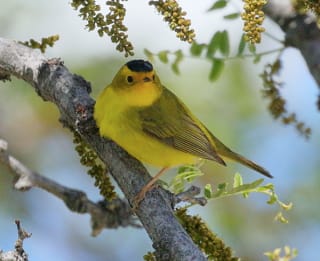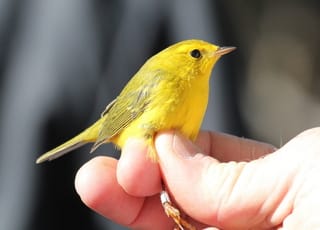Initially this guide displays common birds of all types that are flying right now in our area. Use the selectors below to view rare birds, view birds flying any time, restrict the output to a certain shape of bird, or search by name.
New Mexico is on the western edge of the Central Flyway which is one of the major migration pathways between north and south for birds traveling between breeding and wintering grounds along the Rocky Mountains. This has resulted in the state having an incredible diversity of birds with over 550 different species reported. A little more than half of this number are sighted annually on the Pajarito Plateau. Some of these birds are full-time residents, some migrate here for a few weeks or months, and other are only seen briefly as they pass through the region.
This guide features many of the birds known to frequent Los Alamos county by when they are likely to be seen in the area. You can get additional information on local birds by joining PEEC Birders or going to the eBird website. eBird also includes lists of rare bird sightings and birding hot spots.
Bird References
Birdweb
Cornell Lab of Ornithology
eBird
eNature
Institute for Bird Populations
National Audubon Society
New Mexico Ornithology Society
What Bird
xeno-canto
Subject Area Experts (all guides)
Steve Cary (butterflies)
Beth Cortright (insects)
Terry Foxx (invasive plants)
Leslie Hansen (mammals)
Richard Hansen (fish, mammals)
Dorothy Hoard (butterflies, trees)
Chick Keller (flowers, herbarium)
Shari Kelley (geology)
Kirt Kempter (geology)
Garth Tietjen (reptiles)
David Yeamans (birds)
Web Development and Content Management
Pat Bacha
Jennifer Macke
Graham Mark
Akkana Peck
Contact
Please contact us for local nature questions and sightings. We welcome comments, corrections, and additions to our guides.
For more information about local nature, please visit our Nature Blog or subscribe to PEEC This Week.
Make Selection
 Photo: male by Bob Walker  Photo: female by Bob Walker  Photo: female by Terry Foxx |  Wilson's WarblerWIWA (Cardellina pusilla, Sylvania pusilla)Family: Parulidae (Wood Warblers) Size: 4.3 - 5 in (11 - 13 cm) Flies: Apr 15 - Jun 15 and Aug 01 - Oct 07 Morphology: males are bright yellow below and yellowish olive above with distinctive black eyes and black cap; females are similar but show variation in the amount of black on the top of the head from a few feathers to enough to form a small cap Status: native; locally common Food source: insects including bees, wasps, beetles, caterpillars, and aphids Habitat: moist thickets in woodlands and along streams; near scrub oaks Typical location: Ashley Pond The Wilson’s Warbler is a small, very active bird that often flips its long tail as it hops from branch to branch while foraging. It will also fly out to catch insects mid-air or hop along the ground probing among fallen leaves for food. These birds will visit water gardens. Open cup nests are usually located on the ground at the base of a shrub or sunken in the ground vegetation. Typically the eggs hatch in 10 to 13 days. The young leave the nest a week or two later. Cowbirds often lay eggs in the nests of these warblers. Info Photos Range Frequency |
